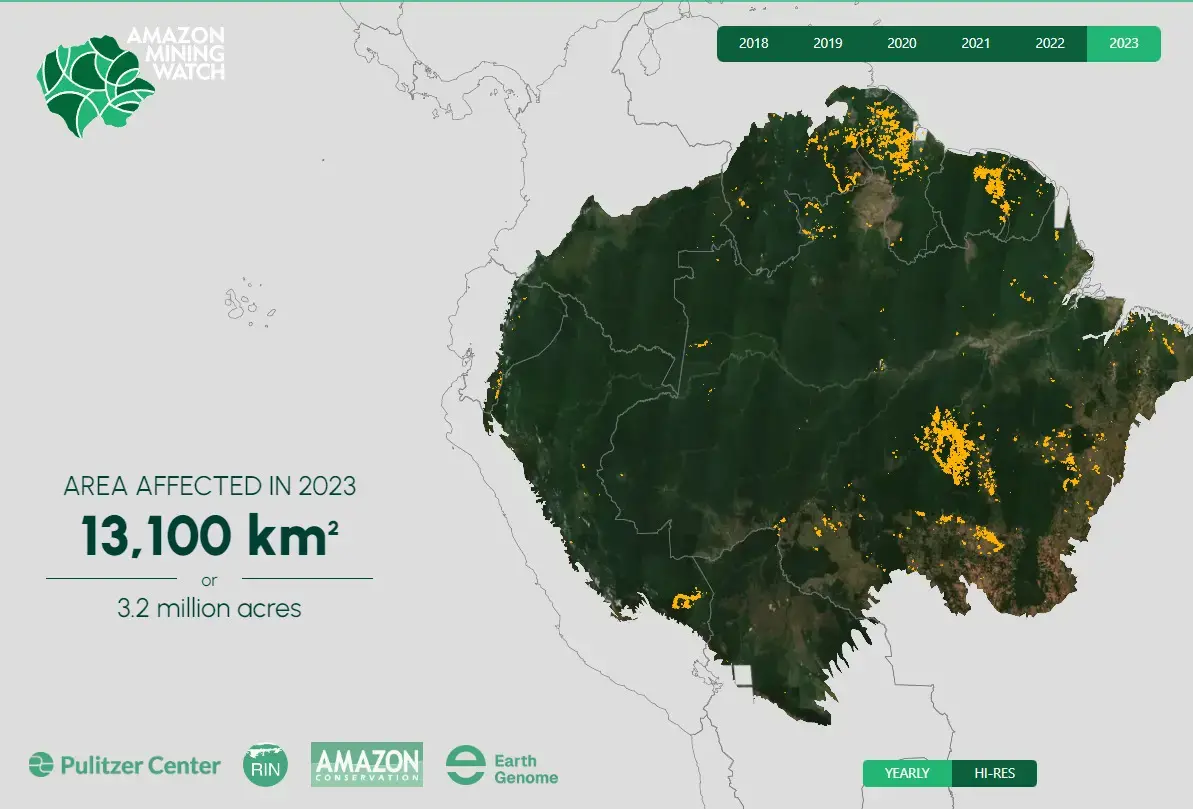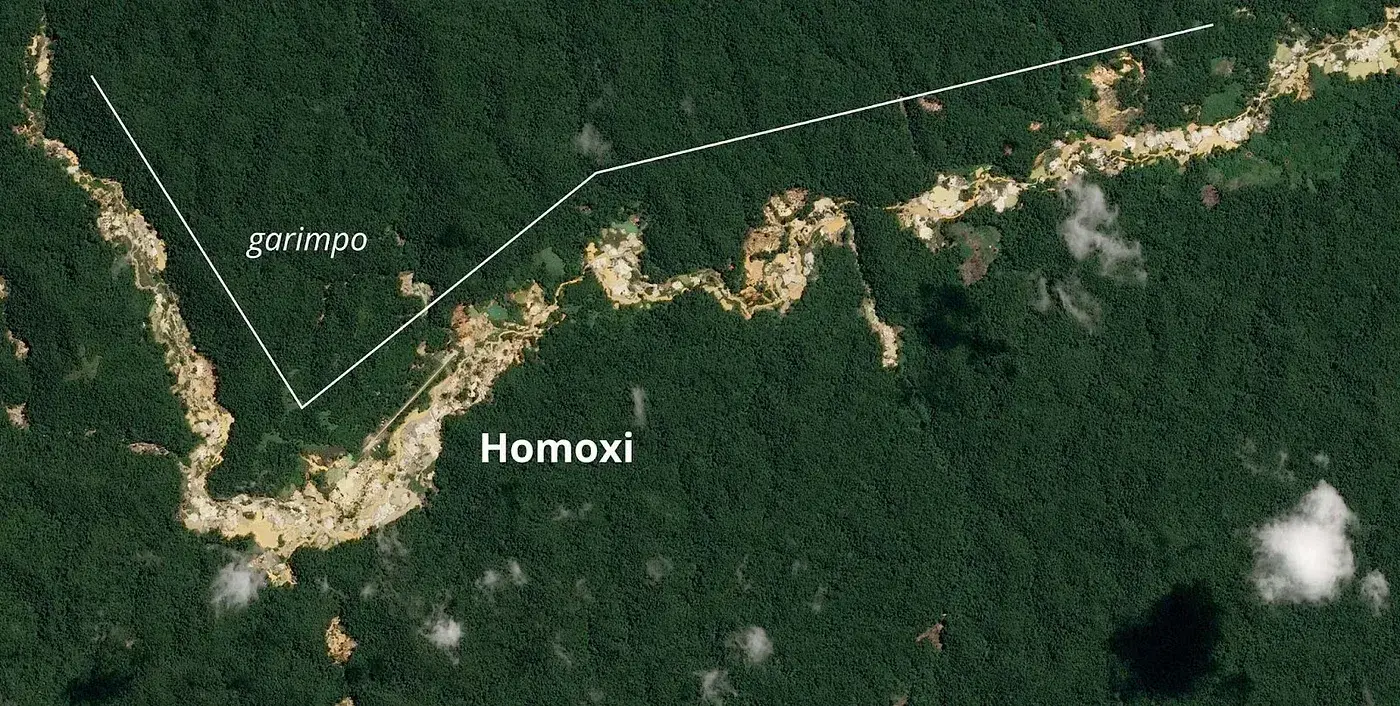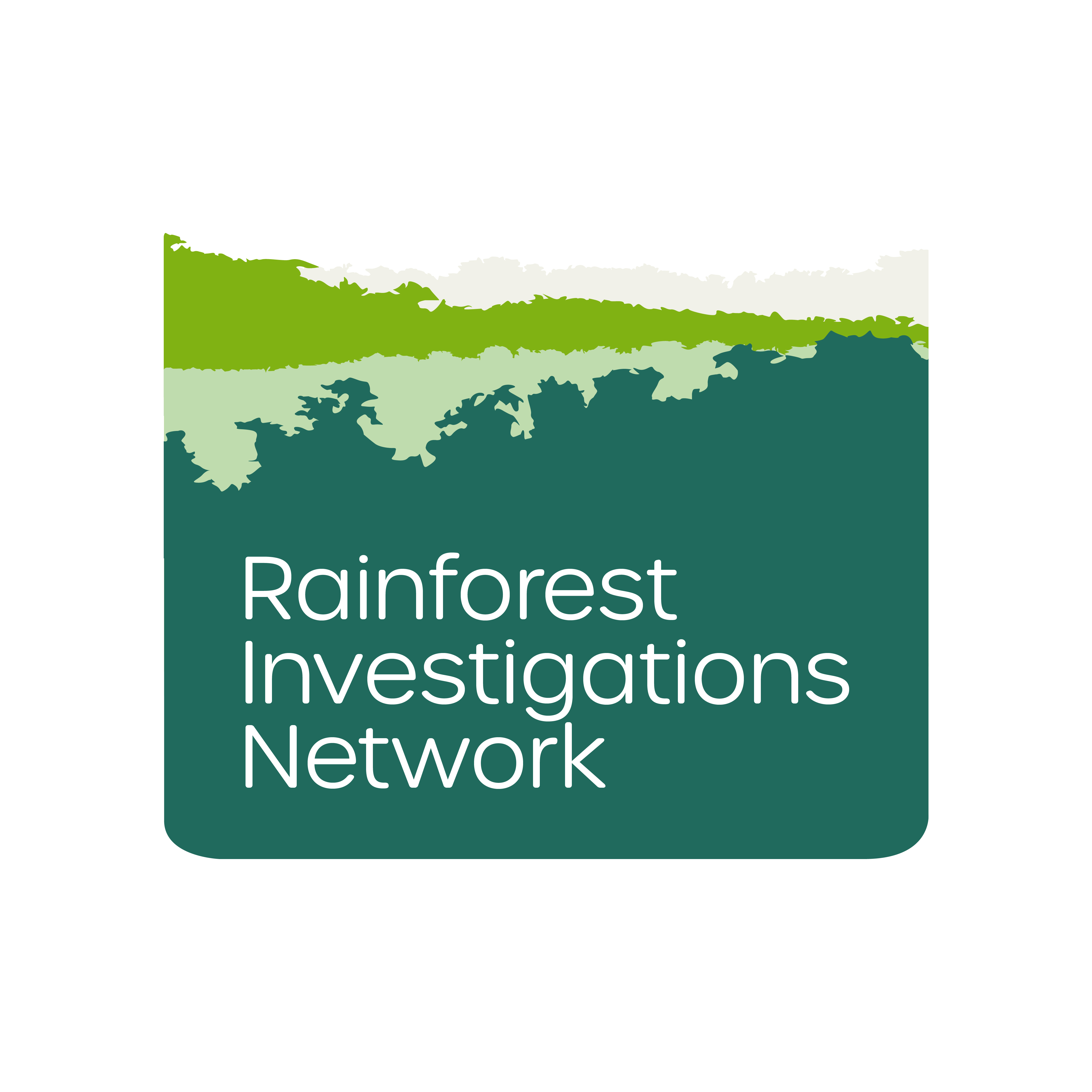Pulitzer Center Update June 12, 2024
Amazon Mining Watch Expands Use of AI To Monitor Illegal Gold Mining
A versão portuguesa deste artigo está disponível aqui.
AS MUCH AS WE'VE HEARD stories about the thirst for gold that drove colonizers to the Americas centuries ago, it's impressive to know that the unbridled pursuit of this precious metal seems far from over. Never in history has gold been so highly valued. In recent years, the rise in the price of an ounce of gold has been meteoric. The last record was broken in January 2024, when the barrier of 2000 dollars per ounce was breached.
This gold, which ends up regulating the global banking system, guaranteeing protection for international investments and enriching national reserves, is directly linked to a series of violations. Disrespect for the rights of Indigenous communities, labor abuses of women and children, and the large-scale destruction of the environment are all present in the gold supply chain.
In the midst of this crisis, the Pulitzer Center has been working in alliance with a multidisciplinary group of organizations to monitor the advance of gold mining in the Amazon rainforest. This week, we are significantly updating the Amazon Mining Watch platform, initially launched in 2022, which brings together an artificial intelligence model to detect open-pit mines in the nine countries of the Amazon region.

The updated model expands the database by several years and allows for enlightening comparisons. Our analysis shows that deforestation and river pollution caused by mining, much of it illegal, has doubled in the last five years.
"The mining is expanding terribly, every year from 2018 through 2023, almost doubling in area, measuring at 3.2 million acres last year. Let it be said, we make detections on sixty-acre parcels, so this number counts some strips of forest at the edges of the toxic mining sludges,” explained Edward Boyda, the leading Data Scientist for Amazon Mining Watch at Earth Genome.
Another member of the alliance, Amazon Conservation, has used the platform's data in its MAAP newsletter. Geospatial analysis shows that the largest mining presence in the Amazon is concentrated in Brazil, followed by Guyana and Suriname.
By reviewing thousands of Sentinel 2 satellite images, the model trains the machine to identify features in the territory similar to open-pit mines. The accuracy rate of this tool is 99.2%, which allows journalists, scientists, and activists to use the data to validate and add context to the causes and legality of these mining operations.
The current version of Amazon Mining Watch was made possible thanks to support from the Mozilla Foundation. The official launch was announced on Wednesday, June 12, during MozFest in Amsterdam.
Since its launch, Amazon Mining Watch has contributed to the Rainforest Investigations Network (RIN), a community created in 2020 that supports investigative journalism in the Amazon, Congo, and Southeast Asia. The first series of investigations based on data from the platform were published by media outlets in Brazil, Spain, Venezuela, and the United States. In these cases, the analysis was expanded and showed the relationship between clandestine airstrips in the Amazon and the illegal exploitation of gold mines.

At the beginning of 2023, at a time when the illegal mining crisis in Yanomami territory in Brazil gained worldwide prominence, Amazon Mining Watch carried out the first test of the updated machine learning model. Thanks to the creation of Earth Index by the Earth Genome team, the platform has become much faster and can be used for specific tasks. In the case of the Yanomami, we were able to respond to the crisis by generating a story published in partnership with the Brazilian outlet Repórter Brasil, which revealed that destruction from mining in the territory was three times more extensive than previous government estimates.
The next step in expanding the use of artificial intelligence to identify gold mines will be to apply the tool in other rainforest environments. In alliance with Cambridge Digital Humanities, a research center at Cambridge University, the Pulitzer Center is working on identifying features in the forests of Cambodia. The project will be launched during Social Data School, which will take place in Cambridge between September 9th and 13th.









